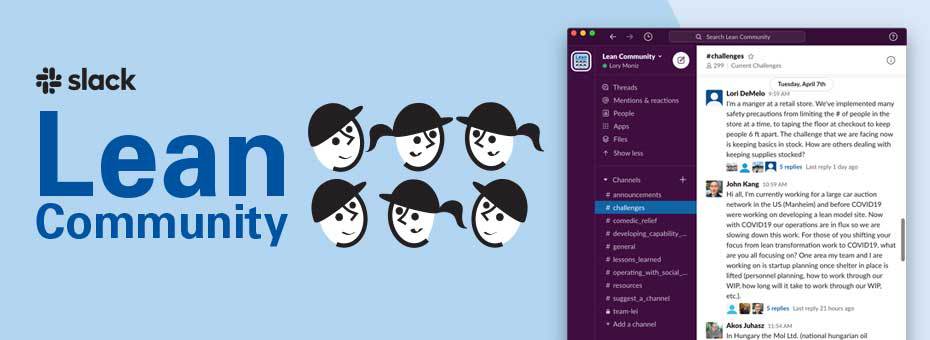With social distancing and limited ability to continue operations due to the Covid-19 pandemic, lean practitioners have had to solve many new problems. Among them: figuring out how to conduct kaizen events when not everyone can go to the gemba. The members of the #LeanCommunity who have experimented with virtually holding kaizen events are sharing their countermeasures.
“We began by using a digital process-mapping tool to diagram what the team ‘says’ is the current process. This was relatively straightforward via screen share,” said one member who was in the beginning phases of a work process kaizen with a restaurant client.
He said the next step is for one member of the team “to set up a mock kitchen in his apartment and we’ll do a process-timing exercise on the current process — either virtually or he will have someone in his house help.” The team then plans to use the data “to inform a virtual working session on a ‘better way,’ where I expect the process diagram will be the main way to visualize the work,” the member wrote. “Then I expect we’ll test out the new process in a mockup scenario again.”
Another project will be to video record the production processes the restaurant is using for delivery orders and gather data to determine opportunities for kaizen. “Now that the operation has shifted from predominantly serving customers in-store to delivery, we are hypothesizing there will be a worthwhile opportunity to ensure better quality, accuracy, and timeliness of the delivery orders,” the member said.
Another practitioner, Charles Giersz, shared the following best practices:
- Events utilizing tools that require hands-on activities, such as standard work and 3P, are sometimes easier to run in two parts (the prep, data evaluation, and planning as a virtual team, then the physical activity either done via an action plan or as individuals to come back and share after some prep time to allow the team to review and narrow down the ideas to implement).
- Using videos or live streaming can allow for work to be observed remotely in these types of situations (be careful as this can lead to frustration if it’s not typically done in your workplace).
- Don’t forget about breaks and ergonomics. It’s too easy to get caught up in the work if everyone is in a different location sitting in front of a webcam.
- We use Microsoft Teams, which has an app, Microsoft Whiteboard, which is a decent collaborative platform and allows for the traditional post-it note environment.
- If you have people on-site and some virtual, don’t forget the basic principle of humility and respect for people. Respect time zones, appreciate those on the front lines, etc.
In response to questions about Microsoft Teams from another community member, Giersz replied, offering the following tips: “It definitely has its drawbacks; however, I do a few things to make using it a little more friendly:
- I typically do not use the whiteboard app you can open during a [Microsoft] Teams meeting. I use the program standalone and invite people from the team to view and edit it.
- In whiteboard, format the background to have a grid pattern (helps when freehand drawing).
- Turn on Draw to shape and object snapping in the settings (turns pen sketches into cleaner shapes)
- I use the add note feature the most (basically a post-it). The ability to change their colors is helpful when categorizing things or showing handoffs in a process flow. You can also rotate them into a diamond shape (however, the text inside also rotates).
- I use it mostly for process mapping, a little value stream mapping (but I prefer Visio, as it’s cleaner), and some of the basics you would normally have on the wall in the kaizen team room (parking lot, benefits and concerns, Pick charts, etc.).
- I also use it like I would a flip chart when doing any training to help illustrate any key points with graphs or sketches (but it takes practices and a forgiving audience as it is not always pretty).
- I do have a touchscreen monitor that helps sometimes, but not always, and I have not been able to get an active pen to work (but I’m not sure if it’s me or if it’s a Dell issue).”
Have you created or adapted an approach that is helping your organization solve problems more quickly? Are you looking for new solutions that work amid the chaos of a pandemic? Join the #LeanCommunity and share them. The community is working to collaboratively address the unique issues brought on by the pandemic and sharing stories of resilience and grit during a crisis.





